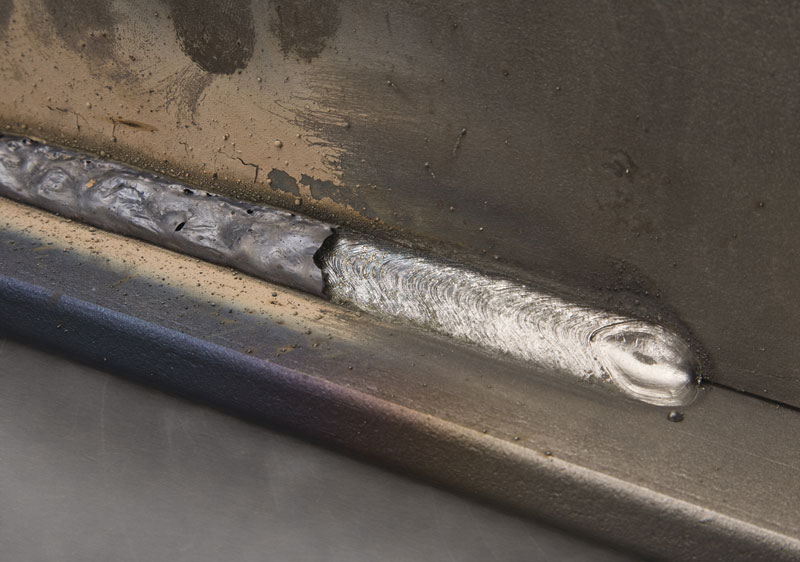What is Porosity in Welding: Comprehending Its Reasons and Enhancing Your Abilities
Wiki Article
Untangling the Mystery of Porosity in Welding: Tips for Decreasing Problems and Optimizing Quality
In the detailed world of welding, porosity stays a persistent difficulty that can significantly affect the top quality and integrity of bonded joints. As we dive into the depths of porosity in welding, revealing the secrets to its avoidance and control will certainly be critical for experts seeking to grasp the art of top notch weldments.Understanding Porosity in Welding
Porosity in welding, a common concern run into by welders, describes the existence of gas pockets or spaces in the welded material, which can endanger the stability and top quality of the weld. These gas pockets are generally caught during the welding procedure because of various factors such as inappropriate protecting gas, infected base materials, or wrong welding specifications. The formation of porosity can compromise the weld, making it at risk to fracturing and corrosion, ultimately resulting in structural failures.By identifying the relevance of preserving proper gas shielding, making certain the sanitation of base materials, and optimizing welding setups, welders can substantially decrease the likelihood of porosity formation. Generally, a comprehensive understanding of porosity in welding is essential for welders to create high-grade and durable welds.

Typical Root Causes Of Porosity
When inspecting welding processes for prospective high quality concerns, recognizing the usual reasons of porosity is essential for maintaining weld stability and stopping architectural failings. Porosity, defined by the visibility of dental caries or gaps in the weld steel, can dramatically endanger the mechanical properties of a welded joint.
Furthermore, welding at inappropriate criteria, such as excessively high travel rates or currents, can generate excessive turbulence in the weld pool, trapping gases and triggering porosity. By resolving these usual reasons with proper gas protecting, material prep work, and adherence to optimal welding parameters, welders can reduce porosity and enhance the top quality of their welds.
Strategies for Porosity Prevention
Applying reliable safety nets is vital in decreasing the incident of porosity in welding procedures. One method for porosity prevention is making certain proper cleansing of the base steel prior to welding. Impurities such as oil, oil, corrosion, and paint can cause porosity, so detailed cleansing utilizing ideal solvents or mechanical click for info methods is vital.
One more key preventive measure is the selection of the appropriate welding consumables. Making use of high-grade filler materials and securing gases that are suitable for the base steel and welding process can dramatically decrease the danger of porosity. In addition, maintaining appropriate welding specifications, such as voltage, existing, travel speed, and gas circulation rate, is important for porosity avoidance. Drifting from the suggested settings can cause incorrect gas coverage and inadequate fusion, resulting in porosity.
In addition, employing proper welding methods, such as maintaining a constant traveling speed, electrode angle, and arc size, can assist prevent porosity (What is Porosity). Appropriate training of welders to ensure they comply with finest methods and high quality control treatments is likewise crucial in lessening porosity defects in welding

Finest Practices for Quality Welds
One trick method is maintaining proper sanitation in the welding location. Completely cleaning the work surface and bordering location prior to welding can help reduce these his comment is here concerns.Another best technique is to carefully choose the proper welding criteria for the particular products being signed up with. This consists of establishing the correct voltage, present, take a trip speed, and securing gas flow price. Proper parameter selection makes sure optimal weld penetration, fusion, and total quality. Using top quality welding consumables, such as electrodes and filler metals, can dramatically impact the last weld high quality. Buying costs consumables can lead to more powerful, my site much more durable welds with fewer defects. By following these best practices, welders can regularly create high-quality welds that meet industry standards and surpass consumer expectations.
Importance of Porosity Control
Porosity control plays an essential duty in making certain the stability and high quality of welding joints. Porosity, characterized by the visibility of tooth cavities or gaps within the weld steel, can dramatically endanger the mechanical residential properties and architectural honesty of the weld. Extreme porosity weakens the weld, making it extra prone to breaking, deterioration, and general failure under functional loads.Effective porosity control is necessary for maintaining the wanted mechanical residential or commercial properties, such as toughness, ductility, and strength, of the bonded joint. What is Porosity. By minimizing porosity, welders can improve the total quality and reliability of the weld, making certain that it satisfies the efficiency requirements of the designated application
In addition, porosity control is important for accomplishing the wanted aesthetic appearance of the weld. Too much porosity not just damages the weld however additionally diminishes its aesthetic appeal, which can be important in sectors where aesthetic appeals are very important. Proper porosity control methods, such as making use of the right shielding gas, regulating the welding specifications, and making certain proper cleanliness of the base materials, are necessary for generating high-quality welds with very little flaws.

Final Thought
In final thought, porosity in welding is a typical issue that can endanger the top quality of the weld. It is essential to control porosity in welding to guarantee the stability and strength of the last item.Report this wiki page